
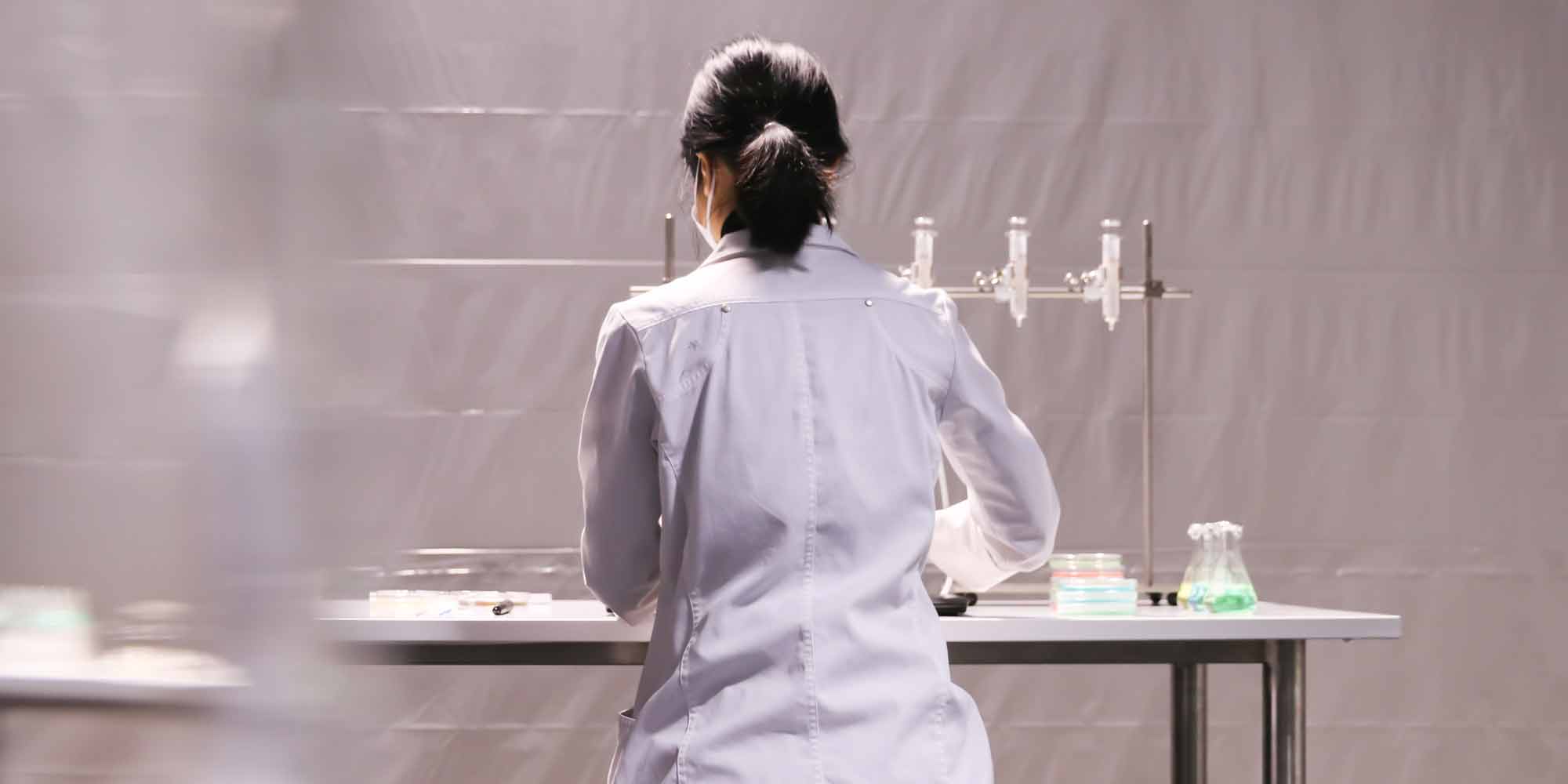

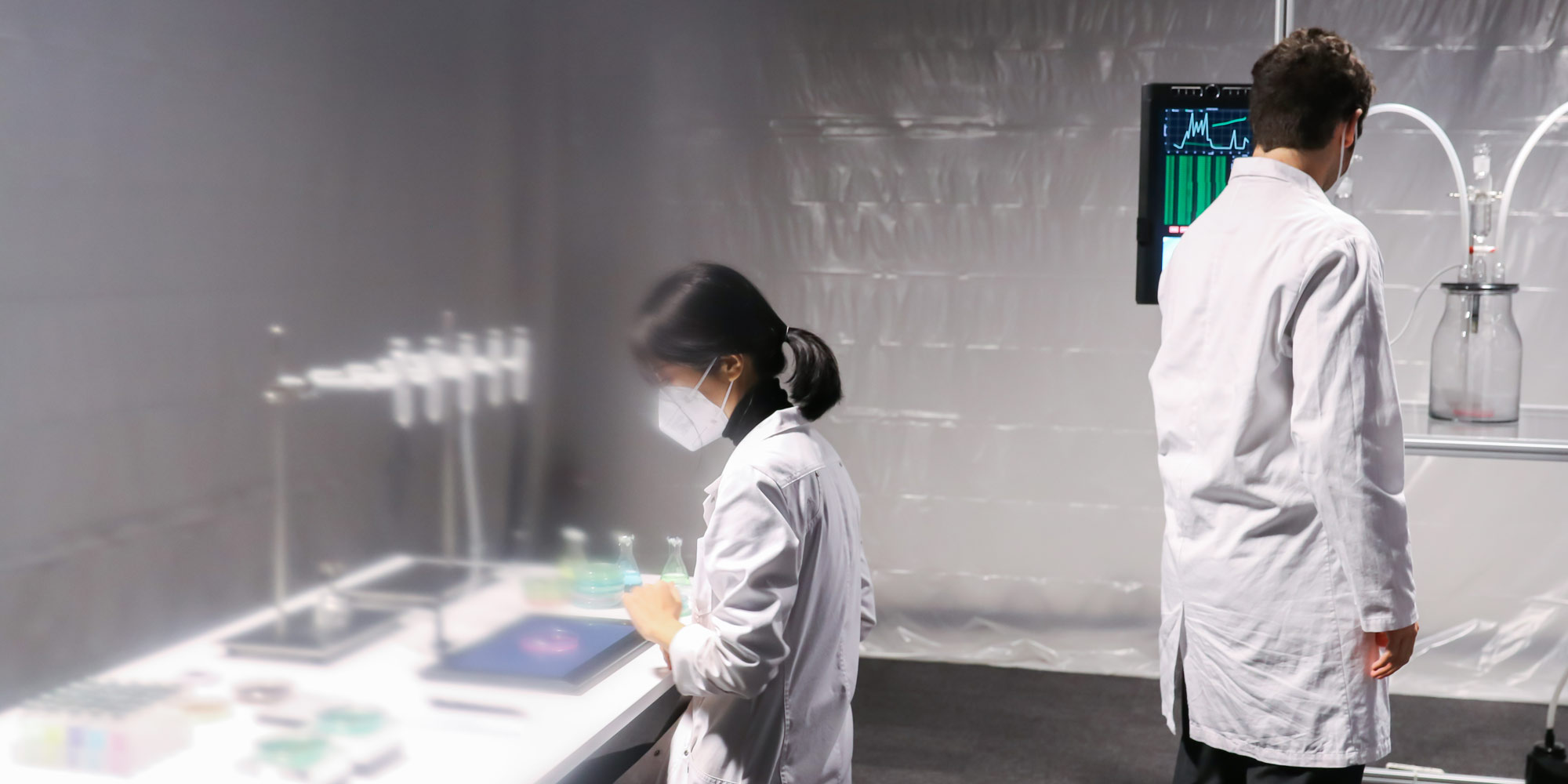
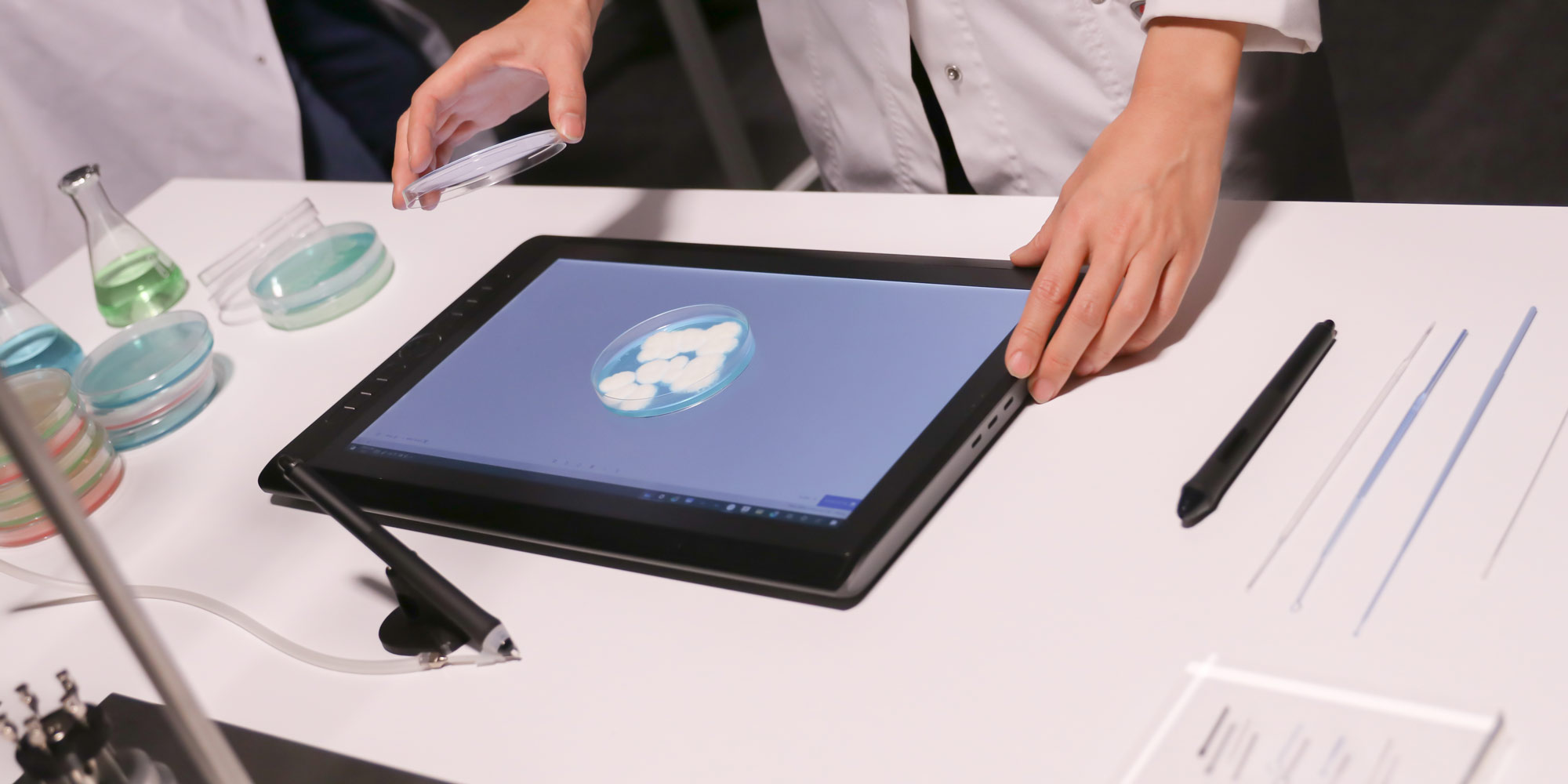
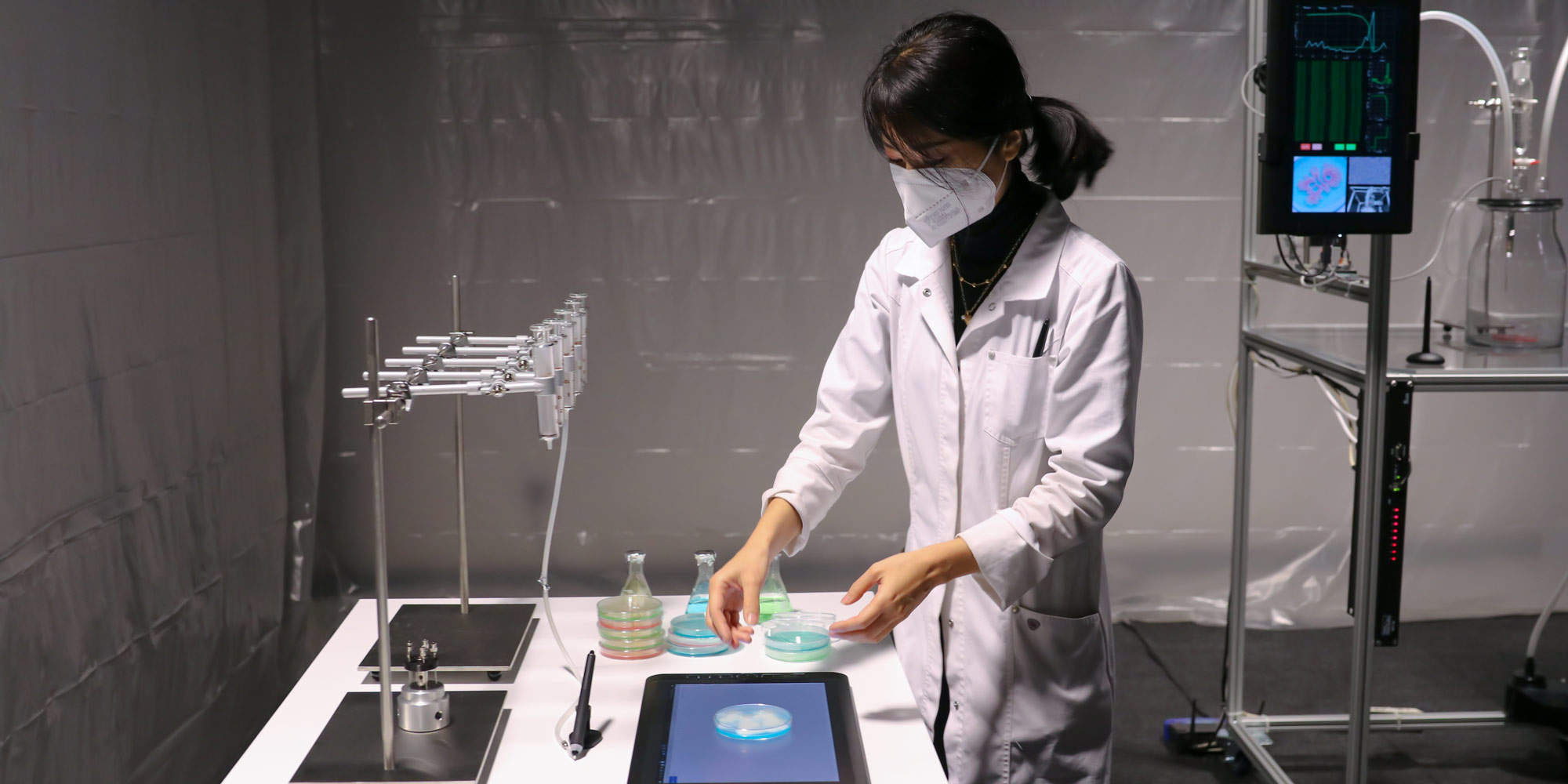
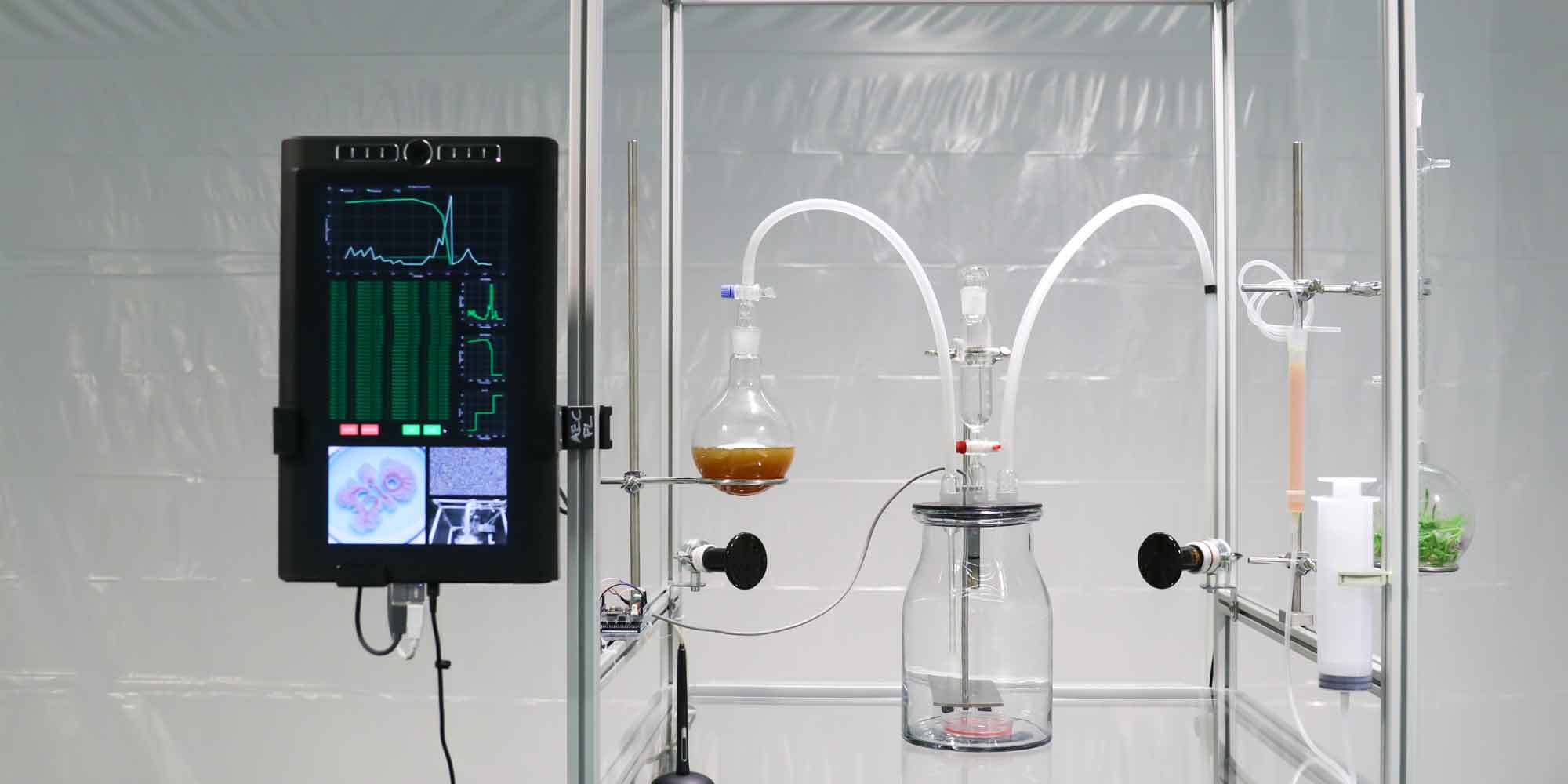

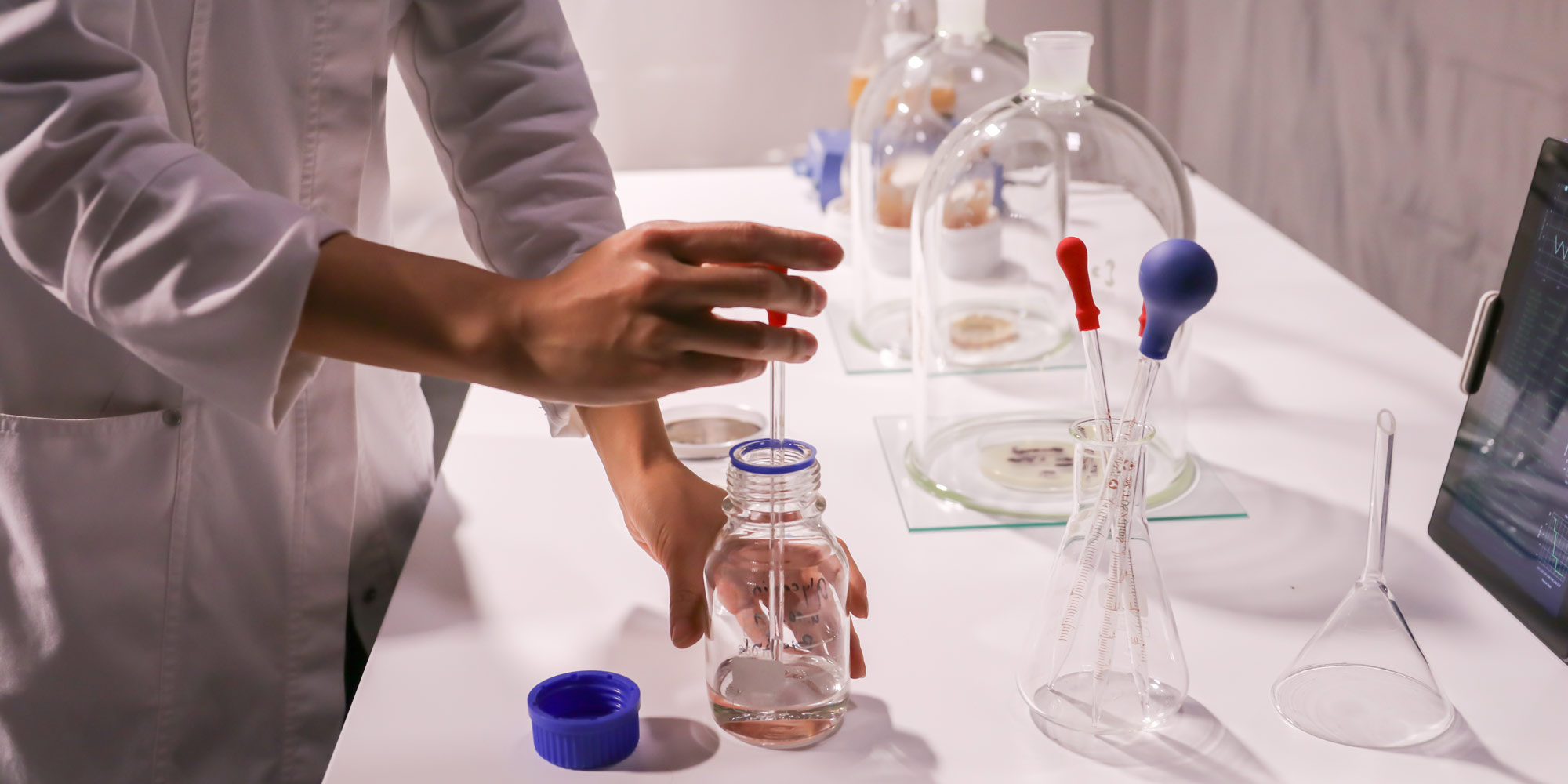
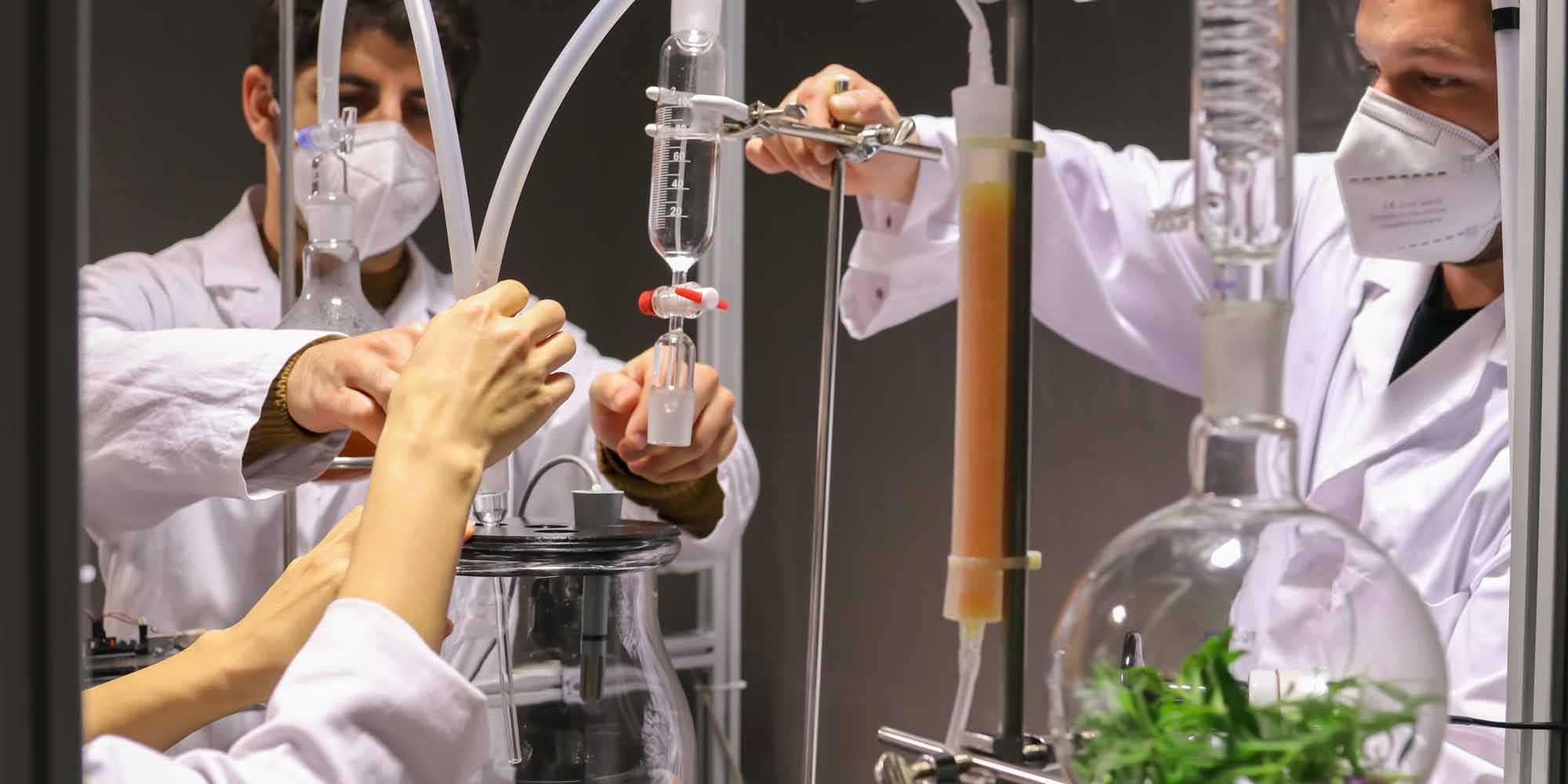
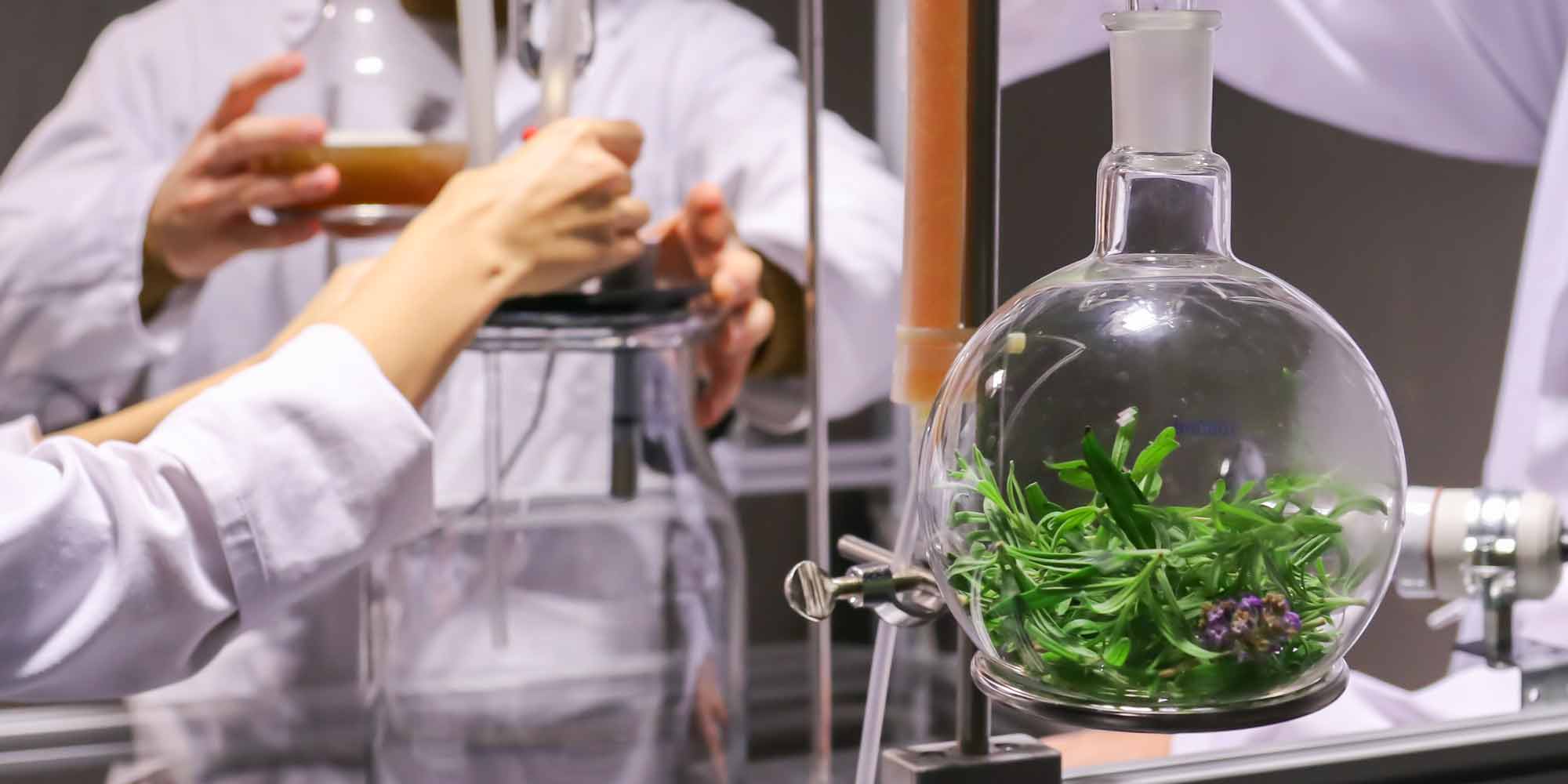
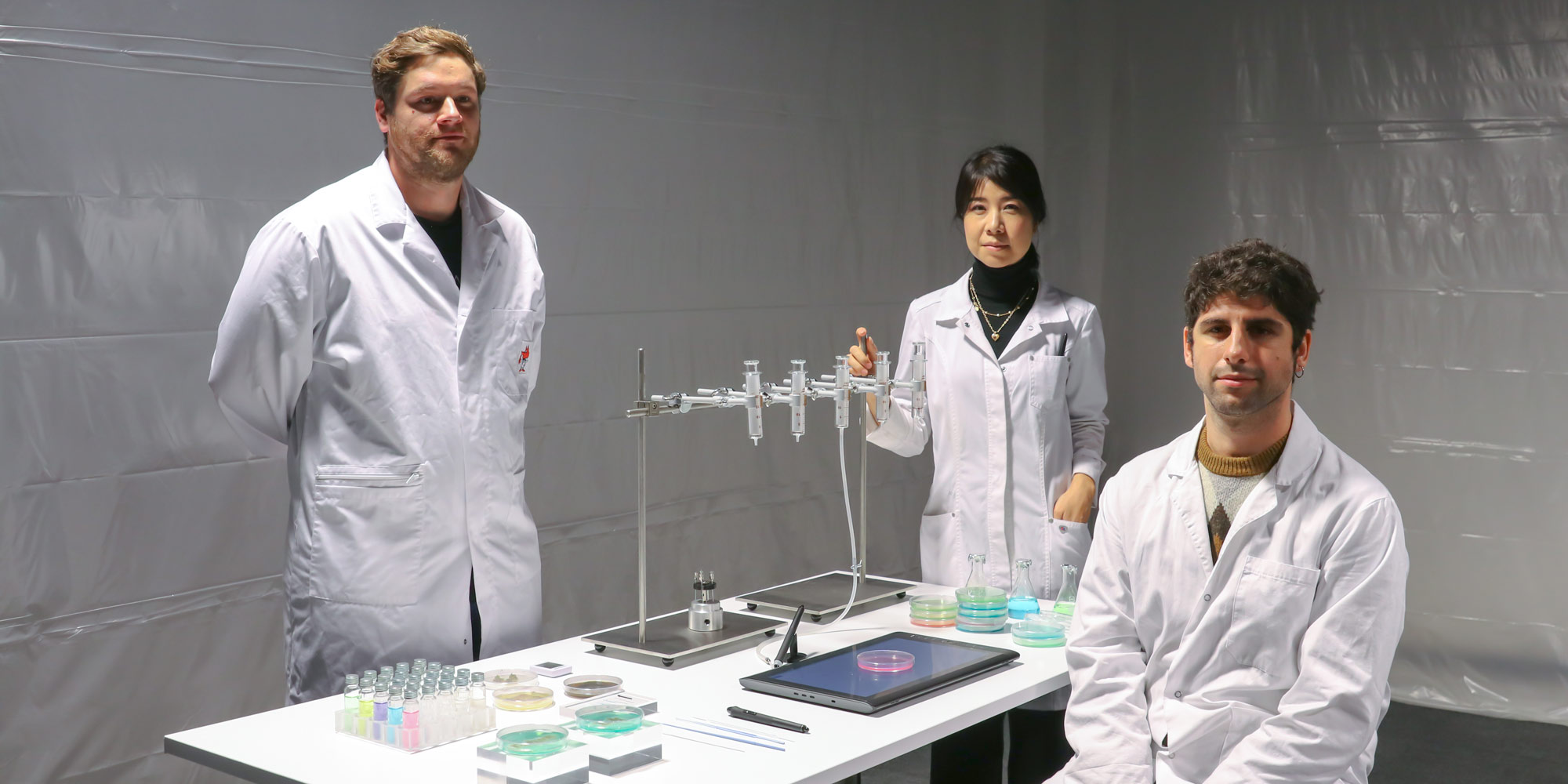
In a specially created room, Bio Ink research recently entered its second phase – at the studio of the Ars Electronica Futurelab. An experimental setup of chemical substances, test tubes and electronics serves the research team, consisting of Yoko Shimizu, Georgios Tsampounaris, Samuel Jakob Eckl, and Anastasia Bragina, as a factory of innovation. Once again, digital Wacom pens and tablets act as the starting point for the creation of Bio Ink artworks: living messages, created in a creative symbiosis between microorganisms and humans.
This time, however, the idea goes a decisive step further: the researchers can now actively interact with the microbial design process via the chemical reaction chamber and a digital touch display.
During the process of drawing, the system captures digital pen data, such as pen pressure, drawing speed and tilt, and converts them into biological parameters, such as temperature, humidity and biochemical reactions. A chemical reaction chamber then allows the researchers to automatically or manually interact with the living artworks as they grow.
“Not being able to control something, I think is the beauty of co-creating with nature”
Yoko Shimizu, Artist and Researcher, Ars Electronica Futurelab
Consisting of a main glass vessel for the living artwork connected to various glass lab-ware and electronics to monitor, the chamber environment triggers various biochemical reactions. Depending on the characteristics of diverse cultures of microorganisms used in the ink, various methods of biochemical interactions can be selected: By adding chemicals and nutrients, changing pH, controlling light spectrum and exposure, or even cultivating other organisms, cross-species interaction occurs.
Through the multiple possibilities of interaction, the biological artworks evolve into aesthetic patterns that symbolize the power of nature. A wide variety of organisms, including the human being, can interact with each other within this creative ecosystem – and together create a living work of art.
The chemical reaction chamber consists of a main glass vessel for the living artwork connected to various glass labware and electronics to monitor the chamber environment and trigger biochemical reactions. Depending on the characteristics of the microorganism used in the ink, we can select various methods of biochemical interactions such as addition of chemicals and nutrients, change in pH, controlling light spectrums and exposure, and even cultivating other organisms for multi-species interactions. Learn more…